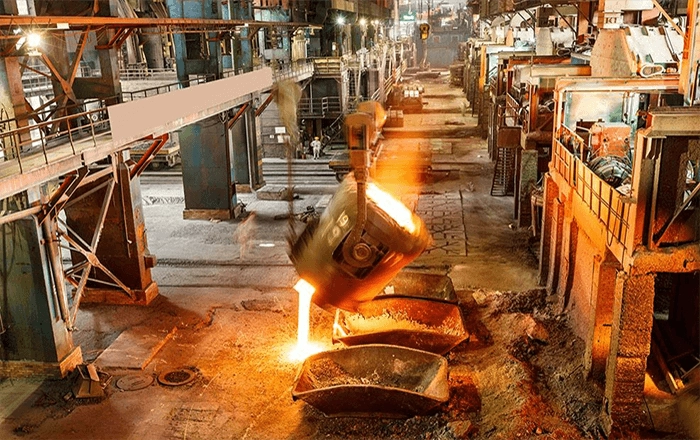can you drink liquid carbon dioxide?
一.what is liquid carbon dioxide?
Liquid carbon dioxide refers to the liquefaction of carbon dioxide gas into a liquid form under high pressure and low temperature. Liquid carbon dioxide is a refrigerant that can be used to preserve food and can also be used for artificial rainfall. It is also an industrial raw material, which can be used to make soda ash, urea and soda.
二.where does carbon dioxide come from?
1. Calcination method
The carbon dioxide gas produced in the process of calcining limestone (or dolomite) at high temperature is washed with water, removed of impurities and compressed to produce gaseous carbon dioxide
2. Fermentation gas recovery method
The carbon dioxide gas produced in the fermentation process of ethanol production is washed with water, impurity removed and compressed to produce carbon dioxide gas.
3. By-product gas recovery method
The production process of ammonia, hydrogen, and synthetic ammonia often has a process of decarburization (that is, the removal of carbon dioxide in the gas mixture), so that the carbon dioxide in the mixed gas can be absorbed under pressure, decompressed and heated to obtain high-purity carbon dioxide gas.
4. Adsorption expansion method
Generally, the by-product carbon dioxide is used as the raw material gas, and the high-purity carbon dioxide is extracted from the adsorption phase by the adsorption expansion method, and the product is collected by a cryopump; it can also be obtained by the adsorption distillation method, which uses silica gel, 3A molecular sieve and activated carbon as the adsorbent. , to remove some impurities, and high-purity carbon dioxide products can be produced after rectification.
5. Charcoal kiln method
Carbon dioxide is obtained by refining charcoal kiln gas and methanol cracking gas.
三. How Liquid Carbon Dioxide Becomes a Gas?
Liquid carbon dioxide can be converted into normal temperature carbon dioxide by vacuum distillation. The principle is that liquid carbon dioxide can be directly evaporated into gas at low temperature and low pressure, and the carbon dioxide molecules in the gas will exist in the temperature and pressure state at room temperature.
四. What are the uses of liquid carbon dioxide?
1. Carbon dioxide can be used as a fire extinguishing agent. This is because carbon dioxide does not support combustion and is heavier than air under normal conditions. Covering the surface of a burning object with carbon dioxide can isolate the object from the air and stop burning. Therefore, carbon dioxide can be used to extinguish fire and is a commonly used fire extinguishing agent.
2. Carbon dioxide can be used as a preservative. Modern warehouses are often filled with carbon dioxide to prevent food from being eaten by insects, vegetables to rot, and extend the shelf life. Store grains, fruits and vegetables.
3. Carbon dioxide can be used as a refrigerant. Solid carbon dioxide is what we call "dry ice" and is primarily used as a refrigerant. Airplanes are used to spray "dry ice" at high altitudes, which can condense water vapor in the air and form artificial rainfall; "dry ice" can also be used as a food quick-freezing preservative.
4. Carbon dioxide can also be used to make some items in the chemical industry, such as carbonated drinks, beer, soft drinks, etc.

五. Why is CO2 a gas and water a liquid?
Because the relative molecular mass of water is large and the gravitational force between molecules is large, so it is a liquid. The density of carbon dioxide is small and the gravitational force between molecules is small.
六. Is CO2 transported as a liquid or a gas?
Mainly transported in liquid form, the availability of infrastructure capable of safe and reliable transport of CO2 is critical for CCUS applications. The two main options for large-scale transport of CO2 are via pipelines and ships. For short-distance and small-volume transport, CO2 can also be delivered by truck or rail, which is more expensive per tonne of CO2 alone. Pipeline transportation is the cheapest way to transport large quantities of carbon dioxide on land, but sea transportation depends on the distance and scale of transportation.
七. Summarize
Carbon dioxide is a colorless and odorless gas at normal temperature and pressure. It is a weakly acidic gas with a slightly pungent odor at high temperature; it is nonflammable and becomes a colorless and odorless liquid after liquefaction. It is a colorless and odorless gas under normal temperature and pressure. The relative gas density (air=1) is 1.522 at 21.1°C and 101.3kPa, and the sublimation temperature is -78.5°C at 101.3kPa. Vapor pressure (kPa): 5778 (21.1°C), 3385 (0°C), 2082 (- 16.7°C), 416 (-56.5°C), 0 (-78.5°C). Gas density (kg/m3): 1.833 (21.1 ° C. 101. 3kPa), 1. 977 (0 ° C, 101. 3kPa). Saturated liquid density (kg/m3): 762 (21.1°C), 929 (0°C), 1014 (- 16.7°C), 1070 (- 28.9°C), 1177 (-56.6°C). The critical temperature is 31.1°C and the critical pressure is 7382kPa. The critical density is 468kg/m3. Triple point -56.6°C (416kPa). Latent heat of evaporation (kj/kg): 234.5 (0°C), 276.8 (-16.7°C), 301.7 (-28.9°C). The latent heat of fusion is 199kj/kg (-56.6°C). Carbon dioxide is a weakly acidic gas with a slightly pungent odor at high temperatures. At atmospheric pressure, carbon dioxide cannot exist as a liquid. When the temperature and pressure are higher than the triple point but lower than 31.1°C, carbon dioxide and gas are in equilibrium in a closed container. Carbon dioxide is non-flammable and can corrode some common metals in the presence of water.

